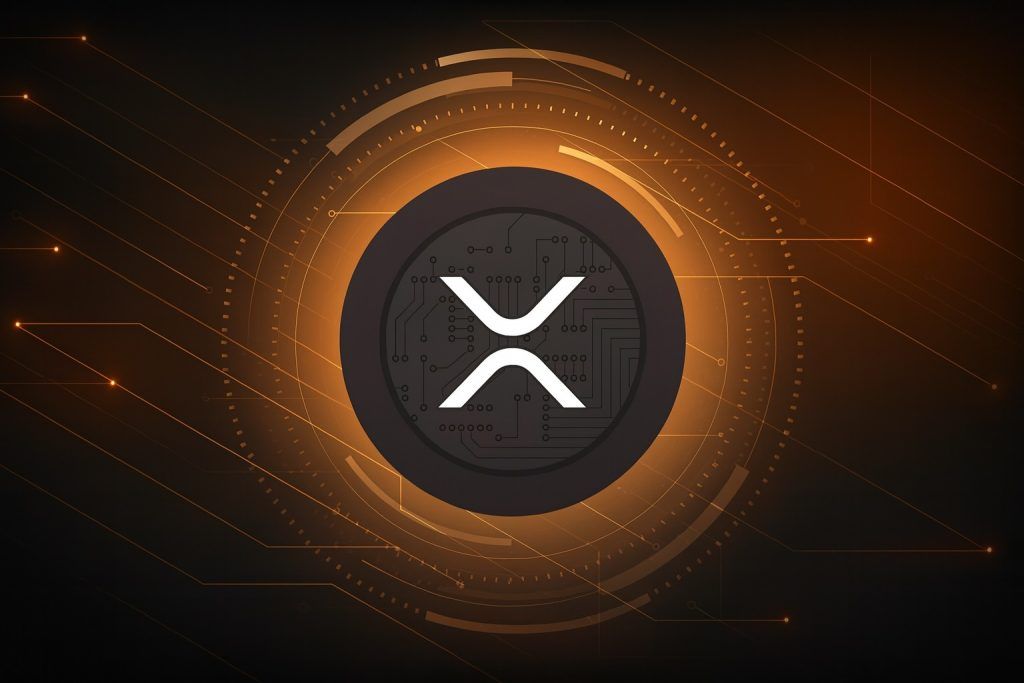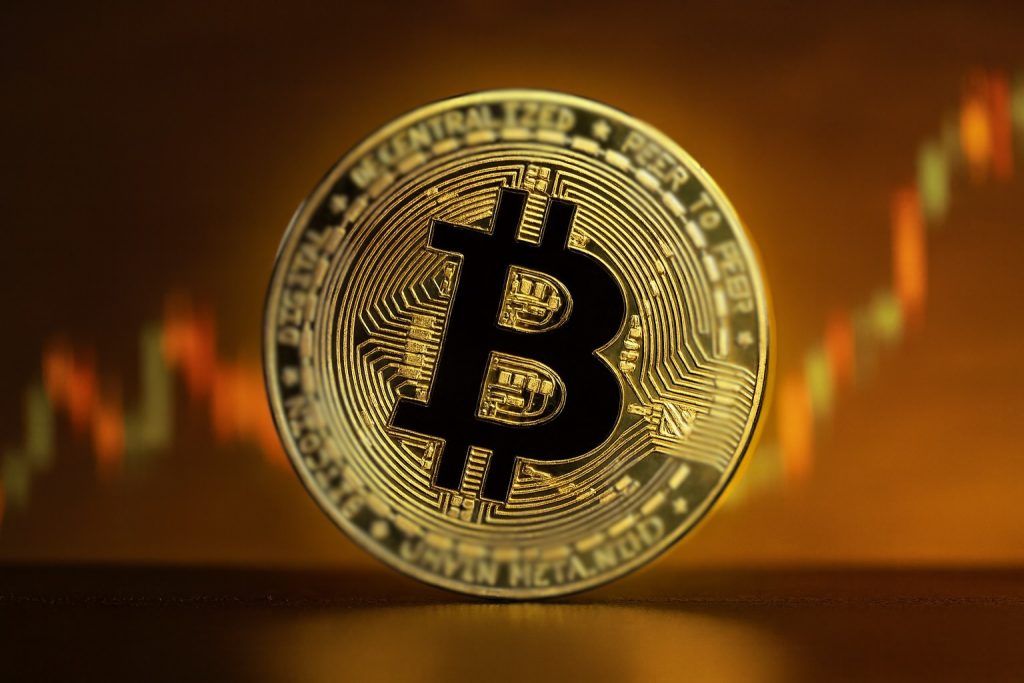- Surging then sliding: Dogecoin (DOGE) jumped about 10% in early October 2025, peaking near $0.27 amid a broader “Uptober” crypto rally [1] [2]. But after whales (large holders) sold heavily around $0.27 on October 7, DOGE plunged ~8% intraday to the mid-$0.24s before finding support [3] [4]. As of Oct. 11, Dogecoin trades around the $0.24–$0.25 range, holding most of its weekly gains despite the turbulence [5] [6].
- Whale moves dominate: On-chain data show whales aggressively accumulated during the dip. In early October, major wallets added roughly 30 million DOGE (>$7 million), while mid-tier holders also boosted balances by tens of millions [7]. This bolstered the $0.25 support, with whale buying “soaking up supply” and even pushing DOGE above $0.27 earlier in the rally [8] [9]. Notably, the top 1% of addresses now control over 96% of Dogecoin’s supply, a concentration that “boosts upside volatility but poses risk of large sell-offs” if those whales dump later [10].
- Bullish technical setup: Analysts highlight an ascending triangle pattern on DOGE’s chart, with higher lows forming around $0.247–$0.250 and a flat resistance ceiling near $0.265–$0.270 [11]. Multiple attempts at ~$0.27 have failed amid profit-taking, but a decisive breakout above $0.27 could “trigger targets in the $0.27–$0.30 zone,” potentially propelling DOGE toward the next psychological level of $0.30 [12] [13]. Momentum indicators are turning positive – Dogecoin’s 50-day moving average is close to crossing above the 200-day (a “Golden Cross” bullish signal) for the first time in months [14]. If $0.25 support holds, traders see near-term upside to $0.30+, whereas a failure could mean retreating to ~$0.22 support [15] [16].
- Meme mania returns: Social media buzz around Dogecoin has spiked. Mentions of DOGE on X (formerly Twitter) jumped 40% month-over-month through early October [17] [18]. Influential crypto traders like “Cas Abbé” and “Trader Tardigrade” argue that if Dogecoin clears $0.30, it could quickly run another 20% higher (into the mid-$0.30s) and possibly “set the stage for a run at $1 by 2026”, though that would require significant catalysts [19] [20]. Such optimistic calls reflect classic FOMO, as Dogecoin’s community is known for exuberant bullish targets whenever momentum builds.
- Broader crypto lift: Dogecoin’s revival is happening against a red-hot crypto market backdrop. Bitcoin rocketed to a record high above $125,000 on Oct. 5 (up ~11% in a week) and Ethereum climbed past $4,500 [21]. This “rising tide” uplifted altcoins and meme coins: DOGE popped ~5% on Oct. 5 alone to ~$0.26 amid the euphoria [22] [23]. Rival Shiba Inu (SHIB) also gained ~5% weekly, but Dogecoin’s ~10% weekly jump and ~$25 billion market cap cemented its status as the top meme-coin of the rally [24] [25]. The total meme coin sector saw substantial inflows – combined market capitalization surged past $81 billion during the uptick [26].
- Regulatory green lights: In a major shift, regulators have turned more favorable toward Dogecoin. The U.S. SEC stated in Feb 2025 that Dogecoin is not a security, removing a huge legal cloud from DOGE [27]. Several Dogecoin-linked ETF proposals are pending, and analysts give a 68–90% chance of a spot DOGE ETF approval by late 2025, thanks to clearer listing standards and strong demand [28] [29]. Indeed, a dedicated Dogecoin fund (ticker: DOJE) launched in September and attracted $20+ million in its first week, indicating robust appetite for regulated DOGE exposure [30] [31]. In Europe, the new MiCA rules allow exchanges to list meme-coins like DOGE under oversight, while some regulators (e.g. in Singapore) have warned about speculative trading and even hinted at potential curbs if mania runs wild [32] [33].
- Tech upgrades & adoption: Dogecoin developers are exploring upgrades to expand utility beyond memes. The Dogecoin Foundation’s “DogeOS” team proposed integrating zero-knowledge proof (ZKP) tech via a new opcode (
OP_CHECKZKP), enabling zk-rollups and Layer-2 apps on Dogecoin without altering its proof-of-work core [34] [35]. “This would let Dogecoin maintain its simple PoW design while becoming a settlement layer for DeFi, gaming, identity and privacy applications,” explained DogeOS director Timothy Stebbing [36] [37]. Such an upgrade (still in proposal stage) could pave the way for DeFi, smart contracts, and even blockchain gaming using DOGE [38] [39]. Meanwhile, Dogecoin’s low fees ( <$0.10 vs. Bitcoin’s $1–$3 fees) continue to make it attractive for micro-payments [40] [41]. Over 200 companies have adopted crypto treasury strategies in 2025, and new initiatives aim to bring professional treasury management to Dogecoin to reduce volatility [42] [43]. Iconic brands from the NBA’s Dallas Mavericks to online retailers already accept DOGE for payments, bolstering its image as a “fun” alternative payment network, though real-world usage remains modest so far [44] [45]. - Risks – volatility and hype: Despite recent strength, Dogecoin remains highly volatile and speculative. Its market cap near $25B means that doubling from here would require enormous new capital – each successive rally is harder to sustain [46]. The meme-coin frenzy can turn on a dime if sentiment cools or a new fad steals the spotlight. History shows DOGE often runs on hype over fundamentals, so traders warn against over-leverage. The extreme whale concentration means a few big sellers could swiftly tank the price before new buyers can step in [47] [48]. Macro factors also loom: any sign of economic stress or hawkish central bank policy could sap liquidity from risky assets like DOGE. In fact, on some down days this month, no single catalyst explained Dogecoin’s dip – analysts pointed to profit-taking and large futures liquidations across crypto as likely culprits [49] [50]. Even strong U.S. economic data (signaling higher rates) can hurt crypto demand [51]. Bottom line: Dogecoin’s fate is still tied to the whims of retail sentiment and the “fear of missing out” cycle, so caution is urged even as optimism grows.
- Forecast – cautious optimism: Market watchers are guardedly bullish on Dogecoin’s outlook for the rest of October. The successful defense of ~$0.25 support by whale buyers is a positive sign, prompting many to believe a rally toward $0.30 is achievable in the coming days or weeks [52]. A break above the $0.27 resistance ceiling could trigger fresh momentum – algorithms and FOMO buyers might pile in, potentially launching DOGE into the low $0.30s quickly [53]. Notably, $0.30 would be Dogecoin’s highest price since April 2022, likely drawing significant attention if reached [54]. Beyond that, technicians see interim targets at $0.33, $0.35–$0.37, and even ~$0.40 in a full breakout scenario [55]. However, sustaining a run toward $0.50 or $1 would require more than charts – probably a combination of continued whale accumulation, favorable news (e.g. an ETF approval or major adoption announcement), and a roaring crypto market. One wildcard remains Elon Musk, Dogecoin’s most famous booster. The billionaire has been quieter about DOGE lately, but speculation abounds that any hint of Musk or one of his companies integrating Dogecoin (for example, on Tesla’s website or X/Twitter) could ignite a sudden rally [56] [57]. For now, mid-October finds Dogecoin with momentum on its side and the beloved Shiba Inu-branded coin back in lively conversation on Wall Street and Crypto Twitter [58] [59]. Traders are watching the $0.27 and $0.30 levels closely – Dogecoin’s next chapter (whether a breakout to new highs or a pullback) will be a closely watched drama in the days ahead [60] [61].
Dogecoin’s Uptober Rally and Price Volatility
October 2025 has been a roller-coaster for Dogecoin. In the first week of “Uptober,” DOGE’s price climbed from the low $0.20s and hovered around $0.25–$0.26, rising roughly 10–13% for the week and about 21% month-to-month [62]. This rally was fueled by a wave of optimism across crypto markets – most notably, Bitcoin leaped to a record high above $125,000 on October 5, and Ethereum breached $4,500, creating a bullish backdrop that lifted speculative altcoins [63]. Dogecoin, being the original meme-coin, rode those bullish coattails: it spiked ~5% on Oct. 5 alone (to about $0.26) amid euphoric sentiment, and notched roughly a 10% weekly gain, outperforming many peers [64] [65]. By early October, Dogecoin’s market capitalization swelled toward $25 billion with daily trading volumes of $3–4 billion – a sign of heightened liquidity and new money flowing in [66] [67].
However, the rally hit turbulence near Dogecoin’s familiar resistance zone around $0.27. On October 7, as DOGE approached ~$0.27 (a level it briefly touched for the first time in weeks), major holders – or “whales” – seemingly seized the opportunity to take profits en masse [68]. Within hours, this wave of whale selling triggered roughly an 8% intraday drop, sending Dogecoin from its highs down into the mid-$0.24s [69]. Trading volumes exploded during the sell-off (over a billion DOGE changed hands in just two hours as stop-loss orders cascaded), highlighting how swiftly sentiment can flip when big players exit positions [70] [71]. It was one of Dogecoin’s widest trading ranges in recent memory, showcasing the coin’s notorious volatility.
Crucially, that plunge proved short-lived. By late October 7, buyers – including likely some “smart money” whales who had sold higher – stepped back in vigorously around the key $0.25 support level, arresting the decline [72]. Market data confirmed that $0.25 was resilient: each dip into the $0.24s met with heavy buying, triggering whale accumulation and short traders rushing to cover positions [73]. In fact, during the final hour of trading on the 7th, Dogecoin managed a modest bounce off its lows, climbing about 1% from the bottom and reclaiming levels just above $0.25 on steady large-volume buys (some blocks of 30 million DOGE at a time) [74] [75]. This V-shaped rebound formed a tentative “double bottom” on intraday charts, suggesting that $0.247–$0.250 is acting as a strong support base for now [76]. By the morning of October 8, Dogecoin was consolidating around ~$0.25 – bruised but still largely holding onto its early October gains after the volatile swing [77].
The pattern repeated on a smaller scale later in the week: Dogecoin saw additional choppiness around October 9–10, dipping toward ~$0.24 again. There was no obvious single catalyst for these mid-week pullbacks – no Elon Musk tweet or fundamental bombshell – which underscores that sometimes markets simply need to cool off after a big run. Analysts suggested it was likely a mix of traders locking in profits and broader crypto turbulence; around that time, the crypto market experienced large leveraged position unwinds (liquidations) that created temporary drag on prices [78]. There were also macro signals (like strong U.S. jobs data) hinting the economy was running hot, which in turn fueled expectations of higher interest rates – a scenario that can weigh on speculative assets like crypto [79]. In one Motley Fool analysis on Oct. 9, it was noted that “no obvious reason” explained Dogecoin’s roughly 3% slide that morning aside from possibly the impact of robust economic data on investor appetite [80]. Another report pinned the crypto dip on “large liquidations” across exchanges, as a flood of leveraged bets were wiped out, briefly unsettling the market [81]. In short, after the initial uptober euphoria, Dogecoin faced a reality check: gravity kicked in, but importantly the floor held around the mid-20-cent range.
Whale Accumulation at Key Levels
The tussle between whale sellers and whale buyers has defined Dogecoin’s price action this month. Blockchain data supports the notion that big players were bargain-hunting during Dogecoin’s dip. In early October alone, whale wallets added approximately 30 million DOGE to their holdings – equivalent to over $7 million at prevailing prices [82]. Mid-tier wallets (sometimes dubbed “sharks” or smaller whales) similarly boosted their stashes by tens of millions of DOGE through the first week of October [83]. This accumulation was evidenced by significant net outflows of Dogecoin from exchanges – about $25 million worth in a 24-hour span – implying that holders were moving coins into cold storage for longer-term holding rather than leaving them on exchanges to sell [84]. Such outflows are typically a bullish sign, as they reduce the readily available supply (or “sell-side float”) on the market [85].
The dominance of whale investors in Dogecoin’s ecosystem is striking – and a double-edged sword. According to CoinDesk data (highlighted by Tech Space 2.0), the top 1% of Dogecoin addresses now control over 96% of the total supply [86]. This means a tiny fraction of holders wield enormous influence over DOGE’s price. In positive times, this concentration can amplify upside volatility – as we saw when whales aggressively soaked up coins during the recent dip, swiftly halting the slide [87]. Big buyers can “boost upside volatility” by creating sudden supply squeezes that launch prices higher [88]. Indeed, the whales’ supportive behavior in early October (defending $0.25 and even helping push DOGE above $0.27 during the rally by accumulating shares) has underpinned the bullish case in the short term [89]. However, the flip side is clear: such concentrated ownership also poses the risk of large sell-offs if and when those top holders decide to liquidate positions [90]. Just as whales can be buyers, they can turn into fierce sellers – as demonstrated on Oct. 7 when a few large players dumping DOGE caused an outsized price collapse in minutes.
Market analysts are well aware of this dynamic. “A few big players can heavily influence price action – both positively and negatively,” noted one CoinDesk report [91]. For now, whale behavior appears supportive of price: those large wallets have mostly been in accumulation mode, using dips as opportunities to increase their DOGE stakes [92]. This has given traders some confidence that there is a “whale backstop” around the mid-$0.20s – a zone where deep-pocketed buyers step in. Going forward, tracking whale wallet activity will remain crucial. Any signs of distribution (for instance, whales sending a flurry of coins to exchanges, presumably to sell) could foreshadow another correction. Conversely, continued whale hoarding would signal that the biggest DOGE holders are betting on higher prices, reinforcing the bullish momentum.
Technical Analysis: Triangle Pattern and Golden Cross
Despite mid-October’s turbulence, Dogecoin’s technical setup has been increasingly optimistic by classic chart analysis. Since late September, DOGE’s price has been coiling into an ascending triangle formation – a bullish pattern characterized by rising lows (higher troughs) converging toward a flat resistance line. In Dogecoin’s case, the “base” of this triangle has been around the $0.247–$0.250 support zone, with the horizontal ceiling roughly at $0.265–$0.270 [93]. Buyers have repeatedly defended the $0.24–$0.25 area, each time lifting the price a bit higher after minor dips, while rallies have consistently been capped just below $0.27. This squeeze in price range reflects narrowing volatility and often precedes a larger move. Ascending triangles typically resolve with a bullish breakout if the upper resistance is decisively breached, as the pattern implies increasing demand (higher lows) in the face of a supply barrier.
Indeed, chart watchers are eyeing the $0.27 level as the trigger. Coindesk analysts noted that a strong move above $0.27 would “trigger targets in the $0.27–$0.30 zone,” based on the measured move projections of the triangle pattern [94]. In practice, clearing $0.27 could open the door for Dogecoin to test the next psychological handle at $0.30 in short order – a view echoed by many traders on social media and analysis forums [95] [96]. The $0.30 mark looms large not just as a round-number milestone but also because DOGE hasn’t traded above 30 cents since April 2022. A rally through that level would mark a multi-year high, likely drawing a wave of attention from even casual market observers.
Momentum indicators are adding to this constructive picture. Market observers point out that Dogecoin’s 50-day moving average is on the verge of crossing above its 200-day moving average – an event known as a “Golden Cross,” traditionally seen as a bullish signal suggesting a major trend shift to the upside [97]. If this crossover is confirmed, it would be DOGE’s first golden cross in many months, possibly attracting technical-focused buyers and algorithmic trading signals that respond to such patterns [98]. Additionally, Dogecoin’s recent push from around $0.23 in late September up to the mid-$0.25s has put it above several key Fibonacci retracement levels from its prior decline. According to TradingView data, DOGE is now consolidating gains near the 23.6% Fibonacci retracement of the last upswing (roughly the move from ~$0.2507 to $0.2701) [99]. Holding above shallow Fib retracements like the 23.6% or 38.2% levels is often interpreted as a sign of strength (only a minor pullback) in an uptrend [100]. In other words, Dogecoin has given back very little of its recent gains, which indicates eager dip-buyers and strong hands.
Other trend metrics have likewise flipped positive in recent days, confirming an uptick in bullish momentum. For example, the Directional Movement Index (DMI) and similar trend-following indicators turned in favor of bulls, reflecting the strong upward push DOGE experienced [101]. On shorter time frames, analysts have noted Dogecoin trading within a rising channel and finding support at key exponential moving averages. Benzinga reported that on the 4-hour chart, DOGE was hovering near $0.25 within a rising channel after testing resistance around $0.27; support was identified in the $0.245–$0.248 zone, reinforced by the 50-day and 100-day EMA lines [102]. As long as that support cluster holds, the near-term bias remains positive, with immediate targets at $0.265–$0.270 for another run [103]. The Parabolic SAR (stop-and-reversal indicator) showed a temporary consolidation phase, but overall the setup favors a continuation higher if the support zone is respected [104].
Of course, overhead resistance must be respected as well. The supply zone around $0.27 – which coincides with Dogecoin’s late August highs – remains the near-term hurdle to beat. Multiple forays into the mid-$0.27s have been swiftly sold into on high volume, indicating that some holders are still eager to take profits at that level [105]. Analysts caution that sustained daily closes above $0.27 are needed to “flip the trend bias higher” and officially break out of the current consolidation range. Without that follow-through, Dogecoin could continue ping-ponging between the mid-$0.20s and upper-$0.20s. If, however, DOGE can achieve a clean breakout – say, trading above $0.28 and holding there – technical charts indicate a potential measured move toward the $0.30–$0.33 area initially, and possibly even as high as ~$0.40 in an extended breakout scenario. Those more ambitious targets ($0.35, $0.40, etc.) would likely come into play only if momentum accelerates significantly (perhaps aided by a new fundamental catalyst or a second wave of buying frenzy).
On the downside, traders have mapped out support levels in case of a deeper pullback. If the $0.25 floor were to fail on a daily closing basis, the next strong supports cited are around $0.24 and especially around $0.22 [106]. A dip toward $0.22 would retrace a chunk of Uptober’s advance and weaken the bullish setup, potentially delaying any rally toward $0.30 as the market rebuilds momentum [107]. In summary, Dogecoin’s chart tilts bullish right now, but the coin is essentially waiting for a high-volume catalyst (or a stampede of buyers) to definitively punch through that $0.27 ceiling. Absent that, it may churn sideways. With technicals coiled tightly, traders are primed for whichever direction the next breakout goes.
Social Hype, Sentiment and the Community Buzz
No discussion of Dogecoin is complete without gauging the meme-fueled sentiment that often drives it. In early October, as DOGE’s price sprang back to life, there was a notable resurgence in social media buzz around the coin. Mentions of “Dogecoin” on X (formerly Twitter) were up 40% month-over-month through early October [108] [109]. This surge in online chatter reflects how quickly the Dogecoin community mobilizes when the price starts trending up – a mix of genuine excitement, lighthearted memes, and a dash of speculative hype. The hashtag #Dogecoin started trending in crypto circles again, and popular Doge-themed memes (featuring the Shiba Inu dog mascot) proliferated across Reddit and Twitter, invoking the spirit of earlier Dogecoin crazes.
Crypto influencers and traders on social platforms have been actively debating Dogecoin’s next move. There’s no shortage of bold predictions – something of a tradition in the Doge community. For instance, pseudonymous analysts like “Cas Abbé” and “Trader Tardigrade” publicly stated that if DOGE can clear the $0.30 barrier, it could quickly run another 20% higher, potentially into the mid-$0.30s [110] [111]. Some commentators have even floated the perennial moonshot target: a scenario where Dogecoin might eventually make a run toward $1.00 by 2026 [112] [113]. “If Doge breaks 30 cents, it’s off to the races – next stop 40 cents, then who knows, maybe $1 by 2026,” one optimistic post read, capturing the bullish sentiment percolating among fans. Such speculation is highly aspirational – a $1 DOGE would imply roughly four times the current price and a market cap in the hundreds of billions – but it underscores the FOMO (fear of missing out) mentality that can take hold. Dogecoin’s history of explosive, retail-driven rallies (recall its 2021 run-up) means believers are always looking for the next exponential run, and they’re vocal about it when momentum appears.
At the same time, not all commentary is purely moonward. There are also measured voices cautioning realism. Several analysts have pointed out that Dogecoin’s huge market valuation (hovering in the tens of billions) means that each additional rally is harder to sustain in percentage terms [114]. Doubling DOGE’s price from here, for example, would require an enormous inflow of capital – far more than was needed to double the price when Dogecoin was just a few billion in market size. As one observer noted, “Doge isn’t a tiny prank anymore – it’s a top-10 crypto. The higher it goes, the more money it takes to keep pushing it up.” This doesn’t mean Dogecoin can’t run higher, but it’s a reminder that law of large numbers starts to catch up.
Moreover, the meme coin community is well aware that hype cycles come and go. Today’s darling could be tomorrow’s forgotten coin if the crowd’s attention shifts. Some caution that memecoins remain high-risk, highly speculative assets that often move more on viral popularity than on any fundamental worth. A few prominent crypto YouTubers and analysts have urged followers to enjoy the Dogecoin ride but not to get overexposed or “bet the farm” on it, given its tendency for boom-and-bust swings. Importantly, regulators in certain regions have issued warnings about the meme-coin frenzy: for example, Singapore’s financial watchdog recently cautioned investors about speculative trading in tokens like DOGE and even hinted that if excessive mania builds up, exchanges might face pressure to delist such risky tokens [115] [116]. These warnings serve as a counterbalance to the unbridled enthusiasm – reminding the public that while Dogecoin can be fun and lucrative in the short term, it remains a volatile ride, not a sure thing.
Nevertheless, the overall vibe in October has been markedly positive in the Dogecoin sphere. The community thrives on memes and optimism, and the revival of DOGE’s price has injected new life into that culture. Online forums are buzzing with Doge memes, rocket emojis, and discussions of everything from technical charts to the latest quip from Elon Musk (even if Musk hasn’t actually commented, his past references are endlessly recirculated). It’s a quintessential part of Dogecoin’s appeal: it’s not just a crypto coin, but an internet cultural phenomenon. This month, that phenomenon is back in focus, showing once again how Dogecoin manages to oscillate between being dismissed as “just a joke” and being taken very seriously by a lot of people – sometimes both at the same time.
Institutional Interest and Regulatory Tailwinds
One of the most noteworthy developments for Dogecoin in 2025 has been the growing institutional interest in this once-dismissed meme asset. Perhaps the biggest milestone: the launch of a dedicated Dogecoin investment fund. In September, asset managers Rex Shares and Osprey Funds teamed up to introduce what is essentially a Dogecoin exchange-traded product (reportedly under the ticker “DOJE”). According to crypto news site CoinCentral, this fund attracted over $20 million in assets within its first week [117] [118]. For context, that’s a significant inflow for a newly launched crypto fund focused on a single altcoin. This event was seen as a validation point – “bringing institutional capital into Dogecoin for the first time,” as CoinCentral put it [119] [120]. The product allows traditional investors to gain exposure to DOGE’s price via their brokerage accounts or retirement plans, without needing to directly buy or custody the cryptocurrency itself. This lowers the barrier for a whole class of investors (like funds or advisors who couldn’t touch unregulated coins) to participate in Dogecoin’s market. While it remains to be seen how much impact such funds will have on price – given Dogecoin’s already large market – the early uptake signals that at least some institutional players see Dogecoin as an asset worth betting on. It’s a remarkable shift for a coin that literally began as a joke about a Shiba Inu dog.
In the same vein, multiple Dogecoin-linked ETF (exchange-traded fund) proposals are now in the pipeline. The U.S. Securities and Exchange Commission (SEC) is reviewing a slate of 16 crypto ETF applications in October 2025, and notably one of them includes a Dogecoin-focused ETF [121]. These proposed funds, if approved, would further legitimize Dogecoin by allowing it to trade on mainstream stock exchanges as part of a basket or futures-based product. There was some concern that a U.S. government shutdown in early October might delay the SEC’s decision-making, but even with that uncertainty, analysts remain optimistic that a Dogecoin-related ETF (likely futures-based or part of a broader crypto index) could eventually get the green light [122] [123]. Industry watchers have assigned a 68–90% probability that U.S. regulators will approve some form of spot Dogecoin ETF by later in 2025, especially after the SEC introduced new generic listing standards that make approving crypto ETFs more straightforward [124] [125].
A huge factor boosting confidence is the SEC’s clarified stance on Dogecoin’s legal status. Back in February 2025, the SEC explicitly stated that Dogecoin is not considered a security under U.S. law [126] [127]. This was a critical clarification, because one of the biggest overhangs for many altcoins had been the fear of being labeled an unregistered security (as happened with Ripple’s XRP previously). With that hurdle removed, Dogecoin doesn’t face the same risk of a sudden SEC enforcement action that might scare off exchanges or institutions. In essence, regulators have given Dogecoin a pass – treating it as more akin to a commodity or currency, which is far more favorable for its adoption. This clear legal status “provides a tailwind that simply didn’t exist in Dogecoin’s 2021 heyday,” as one analysis noted [128] [129]. It means institutional products tied to DOGE have a much clearer path to approval now, and exchanges in the U.S. don’t have to fear listing DOGE from a compliance standpoint.
Outside the U.S., Dogecoin is also seeing regulatory developments mostly tilt in its favor. In Europe, the new MiCA (Markets in Crypto-Assets) framework has come into effect, which lays out guidelines for exchanges and companies to deal in crypto assets legally. Under MiCA, exchanges can list cryptocurrencies like Dogecoin under defined rules and oversight, giving European investors more confidence and protection when trading DOGE. This could boost liquidity and participation from Europe, as exchanges ramp up offerings of meme-coins in a regulated way. On the flip side, as mentioned, some regulators are urging caution. Singapore’s Monetary Authority, for example, highlighted the risks of meme-coin speculation, suggesting that retail investors should be careful and that if mania gets out of hand, there might even be pressure to limit access to such tokens [130] [131]. Overall though, the regulatory environment is much friendlier to Dogecoin now than a couple of years ago. The coin has graduated from being a complete outsider to something that traditional finance is willing to package into products and that regulators are willing to work with (albeit with warnings).
In net effect, institutional and regulatory trends are more friend than foe to Dogecoin at the moment. The entrance of funds and potential ETFs, combined with that not-a-security blessing, provides a legitimacy and accessibility that Dogecoin has never had before. Each new institutional product or approval could incrementally broaden DOGE’s investor base. As one market expert put it, institutions may participate, but Dogecoin’s core value remains community-driven and speculative – meaning the retail crowd and social media buzz will still dominate day-to-day price action [132] [133]. Nonetheless, having Wall Street’s toe in the water doesn’t hurt – it’s a big difference from 2021, when Dogecoin’s surge was purely a retail phenomenon. Now, it’s finding a place (however small) in portfolios and discussions among more traditional investors as well.
Development Updates and Expanding Use Cases
Amid the market excitement, it’s worth noting that the Dogecoin developer community and related projects haven’t been idle. They’ve been quietly pushing forward improvements that could expand DOGE’s utility and shed its image as “just a meme token.” A headline effort on this front is the proposed integration of zero-knowledge proof (ZKP) technology into Dogecoin’s blockchain. In July 2025, the Dogecoin Foundation’s DogeOS team floated a proposal for a new opcode (operation code) called OP_CHECKZKP that would enable advanced cryptographic proofs on Dogecoin’s network [134]. If implemented, this upgrade could open the door for zk-Rollups and other Layer-2 solutions on Dogecoin, potentially allowing for things like decentralized finance (DeFi) applications, smart contracts, and even blockchain games to run on or alongside the Dogecoin chain [135] [136].
What’s notable is that this would not fundamentally change Dogecoin’s core mechanics – it would still be a Proof-of-Work coin with the same token economics (inflationary supply through mining). Instead, the ZKP opcode would add a new capability for verifying external proofs. In plain language, it could let Dogecoin interact with more complex off-chain computations securely, similar to how Ethereum uses rollups to scale. “This would let Dogecoin maintain its simple PoW design while becoming a settlement layer for DeFi, gaming, identity and privacy applications,” explained Timothy Stebbing, director of the DogeOS project [137] [138]. Essentially, Dogecoin could gain some of the smart-contract and scalability features that networks like Ethereum boast – without sacrificing the simplicity and security of its base chain. This proposal is still in early stages and being discussed by the community, but it has generated excitement that Dogecoin might eventually transcend its meme-coin roots and support more “serious” use-cases. Some analysts have mused that if such upgrades succeed and Dogecoin’s utility substantially grows, DOGE could even revisit its all-time high (~$0.73 in 2021) and perhaps approach $1 in the long run, though that remains a highly aspirational scenario for now [139].
Another angle of development is improving Dogecoin’s financial infrastructure and stability. One example is an initiative called “CleanCore,” which aims to introduce more professional treasury management practices to organizations that handle Dogecoin [140]. The idea is that by treating DOGE reserves a bit more like corporate treasuries – using hedging strategies, proper governance, and transparency – volatility could be better managed, and confidence could increase for businesses that want to use Dogecoin. This ties into a broader trend in crypto: by 2025, over 200 companies have reportedly adopted some form of crypto treasury strategy [141]. Dogecoin could potentially ride that wave if tools exist to help businesses hold and use it in a stable manner.
There’s also ongoing work on interoperability and DeFi integrations. For instance, Dogecoin can be “wrapped” for use on other blockchains (like wDOGE on Ethereum, or via the Dogechain project) to allow DOGE holders to participate in yield farming, lending, and other DeFi activities on smart-contract platforms. These third-party solutions basically create a bridge where Dogecoin itself doesn’t natively have smart contracts, but users can still deploy their DOGE in decentralized apps elsewhere. While such workarounds exist, the possible future ZKP upgrade could make some of these processes more seamless or even bring some functionality directly onto Dogecoin’s network.
On the adoption front, Dogecoin continues to benefit from its pop culture status. It remains a popular payment option for certain online merchants, charities, and even some sports teams. For example, the NBA’s Dallas Mavericks (owned by Mark Cuban) have famously accepted Dogecoin for merchandise and tickets, and Cuban has praised it as a fun way to learn crypto. Several tech retailers and service providers also accept DOGE through payment processors like BitPay. The coin’s friendly branding and enthusiastic community turn out to be assets here – the Shiba Inu dog logo is widely recognized and often draws attention, which sometimes encourages businesses to accept Dogecoin as a promotional novelty if nothing else. Every time a new merchant comes on board (whether it’s an e-commerce site selling electronics or a charity raising funds), it adds to the narrative that Dogecoin could function as a lighthearted alternative for everyday payments. DOGE’s transaction fees are very low (still under $0.10 on average, compared to a few dollars for Bitcoin) [142], and its block times (about 1 minute) are faster than Bitcoin’s, making it reasonably efficient for small transactions. This means micro-transactions and tipping, which Dogecoin has long been used for on Reddit and Twitter, remain a plausible real-world use case.
However, it’s fair to say that real-world usage of Dogecoin is still modest relative to major payment networks or even some other cryptocurrencies. The number of daily Dogecoin transactions is a fraction of those on Bitcoin or Ethereum, and many people hold Dogecoin more as a speculative asset than as a spending currency. So, while the tech upgrades and incremental adoptions are encouraging, DOGE has plenty of room to grow in utility. The project’s core maintainers have historically been cautious and very community-driven (Dogecoin is notably decentralized in development, with no formal foundation funding huge upgrades like some other coins have). But 2025’s burst of interest and capital could invigorate more development – especially if the community and any aligned companies see a chance to push Dogecoin into new territory beyond being “just for fun.”
Market Outlook: Is $0.30 Next?
Looking ahead, the consensus among many crypto analysts as of mid-October 2025 is one of cautious optimism for Dogecoin – at least in the near term. The way Dogecoin bulls swiftly defended that $0.25 level has a lot of traders convinced that another rally toward $0.30 is within reach in the coming days or weeks [143]. The mix of bullish technical patterns (triangle breakout potential, golden cross), renewed social media buzz, and positive macro momentum (with Bitcoin in a strong uptrend) provides a supportive backdrop for further gains [144] [145]. If DOGE can break above its ~$0.27 resistance convincingly, it could trigger fresh FOMO buying from those who’ve been sitting on the sidelines, as well as algorithmic “trend” traders who chase breakouts. This in turn might propel the price into the low-$0.30s relatively quickly [146].
Notably, the next key milestone of $0.30 isn’t just a round number; it’s roughly the high from April 2022. Surpassing $0.30 would mark Dogecoin’s highest price in over three years, which itself would likely generate headlines and draw in new interest [147]. Above $0.30, chart watchers see interim targets around $0.33, then $0.35–$0.37, with the more bullish scenarios pointing to the $0.40–$0.50 range if a true breakout unfolds [148]. Some Fibonacci extension analyses even suggest DOGE could eventually reach the $0.70–$0.80 range (300% above current levels) if this rally mirrors past cycles [149]. There’s an extremely bullish camp – exemplified by one analyst, Javon Marks, who used historical Fibonacci patterns to claim the odds are “extremely high” that Dogecoin could soar 800% from here to around $2.28 in this cycle [150] [151]. However, such outsized forecasts are outliers, and most experts temper their outlook to nearer-term levels unless a new paradigm (like a flood of institutional money or a viral catalyst) emerges.
It’s also important to emphasize the risks and potential pitfalls on the horizon. If the broader crypto market stalls or reverses, Dogecoin – being a high-beta asset – could easily give back gains faster than blue chips like Bitcoin. Any sign of a hawkish turn in macroeconomic conditions (for example, central banks signaling more tightening rather than easing) could sap the liquidity that has been lifting speculative assets [152]. In a risk-off environment, memecoins often get hit the hardest as investors flee to safety. Additionally, Dogecoin’s fate is tied to its whimsical drivers; as mentioned, a lull in social media hype or the emergence of a new trendy meme-coin (there’s always another one, be it Pepe or something yet to be born) could divert attention and funds away from DOGE. Market rotations happen quickly in crypto – today’s meme darling can be forgotten next month if something else starts pumping.
The whale factor also remains a looming wild card. With such a heavy concentration of supply, the specter of a whale sell-off is never far away. If a few top holders were to unload a chunk of their positions (say, to lock in profits or reallocate), it could easily knock the price back down before fresh buyers absorb the selling [153]. Traders will be monitoring whale addresses (to the extent that they can track known large wallets) for any unusual outgoing transfers as an early warning sign of distribution. For now, there’s no indication of a coordinated whale dump – in fact whales seem to be still net accumulators – but this could change if, for instance, DOGE spikes much higher and they decide to cash out.
On a more positive note, there are potential upside catalysts that could surprise the market. Progress on the ETF approval front is a big one: if the SEC were to approve a high-profile crypto ETF that includes Dogecoin, or if the existing DOGE fund (DOJE) rapidly grows in assets under management, it would be a confidence booster that could spur fresh buying. Continued crypto-friendly signals from regulators – or at least an absence of adverse news – will help keep institutions interested [154] [155]. Every week that goes by without a regulatory setback is practically a win for sentiment now, given how sensitive crypto markets have been to those headlines in recent years.
And of course, there’s the Elon Musk wildcard. The Tesla/SpaceX/X (Twitter) CEO’s name is practically synonymous with Dogecoin’s wild 2021 ride. Lately, Musk has been relatively quiet about DOGE in public, focusing on running X (which he has hinted could incorporate payment features eventually) and other ventures. But the mere possibility of Musk doing something Doge-related – say, integrating Dogecoin tipping on X, or having one of his companies accept DOGE for payments (Tesla already accepts it for some merchandise) – is enough to keep hope alive in the community. Interestingly, Musk himself just achieved a historic personal wealth milestone, reportedly becoming the first person ever to hit a $500 billion net worth in early October [156]. This led some Dogecoin fans online to jokingly speculate whether he might “celebrate” by making a Dogecoin announcement (for instance, a Doge logo on an X app payment button or some quirky tweet). There’s no concrete evidence of such a thing at the moment [157] – it’s more wishful thinking – but it illustrates how the cult of Elon remains intertwined with Dogecoin’s story. Traders certainly haven’t forgotten that a single Musk tweet in the past could send DOGE’s price soaring double digits in minutes.
In summary, Dogecoin enters mid-October 2025 with the wind at its back, but fully cognizant that volatility is the norm. The short-term focus is clear: $0.27 and $0.30 are the key levels to watch. Clearing those hurdles could confirm that the meme coin’s uptrend is truly back in business. Beyond that, achieving something like $0.40 or higher would likely require not just technical breakouts but fresh fundamental excitement – whether from adoption news, a technological breakthrough, or a big-name endorsement. Traders and investors are advised to stay alert and nimble. As the past week demonstrated, Dogecoin’s fortunes can shift quickly; whales can become sellers just as fast as they became buyers, and sentiment on Crypto Twitter can go from frenzy to fizzle in a hurry. But for now, the tone is optimistic, and the beloved Shiba Inu-branded coin is once again a topic of lively conversation both on Wall Street and in online meme communities. DOGE’s next chapter – possibly a run at that elusive $0.30 – will be closely watched by friend and foe alike in the days ahead [158] [159].
References
1. ts2.tech, 2. ts2.tech, 3. ts2.tech, 4. ts2.tech, 5. ts2.tech, 6. www.benzinga.com, 7. ts2.tech, 8. ts2.tech, 9. ts2.tech, 10. ts2.tech, 11. ts2.tech, 12. ts2.tech, 13. ts2.tech, 14. ts2.tech, 15. ts2.tech, 16. ts2.tech, 17. ts2.tech, 18. ts2.tech, 19. ts2.tech, 20. ts2.tech, 21. ts2.tech, 22. ts2.tech, 23. ts2.tech, 24. ts2.tech, 25. ts2.tech, 26. www.tradingview.com, 27. ts2.tech, 28. ts2.tech, 29. ts2.tech, 30. ts2.tech, 31. ts2.tech, 32. ts2.tech, 33. ts2.tech, 34. ts2.tech, 35. ts2.tech, 36. ts2.tech, 37. ts2.tech, 38. ts2.tech, 39. ts2.tech, 40. www.benzinga.com, 41. www.benzinga.com, 42. ts2.tech, 43. ts2.tech, 44. ts2.tech, 45. ts2.tech, 46. ts2.tech, 47. ts2.tech, 48. ts2.tech, 49. ts2.tech, 50. finance.yahoo.com, 51. finance.yahoo.com, 52. ts2.tech, 53. ts2.tech, 54. ts2.tech, 55. ts2.tech, 56. ts2.tech, 57. ts2.tech, 58. ts2.tech, 59. ts2.tech, 60. ts2.tech, 61. ts2.tech, 62. ts2.tech, 63. ts2.tech, 64. ts2.tech, 65. ts2.tech, 66. ts2.tech, 67. ts2.tech, 68. ts2.tech, 69. ts2.tech, 70. ts2.tech, 71. ts2.tech, 72. ts2.tech, 73. ts2.tech, 74. ts2.tech, 75. ts2.tech, 76. ts2.tech, 77. ts2.tech, 78. finance.yahoo.com, 79. finance.yahoo.com, 80. finance.yahoo.com, 81. finance.yahoo.com, 82. ts2.tech, 83. ts2.tech, 84. ts2.tech, 85. ts2.tech, 86. ts2.tech, 87. ts2.tech, 88. ts2.tech, 89. ts2.tech, 90. ts2.tech, 91. ts2.tech, 92. ts2.tech, 93. ts2.tech, 94. ts2.tech, 95. ts2.tech, 96. ts2.tech, 97. ts2.tech, 98. ts2.tech, 99. ts2.tech, 100. ts2.tech, 101. ts2.tech, 102. www.benzinga.com, 103. www.benzinga.com, 104. www.benzinga.com, 105. ts2.tech, 106. ts2.tech, 107. ts2.tech, 108. ts2.tech, 109. ts2.tech, 110. ts2.tech, 111. ts2.tech, 112. ts2.tech, 113. ts2.tech, 114. ts2.tech, 115. ts2.tech, 116. ts2.tech, 117. ts2.tech, 118. ts2.tech, 119. ts2.tech, 120. ts2.tech, 121. ts2.tech, 122. ts2.tech, 123. ts2.tech, 124. ts2.tech, 125. ts2.tech, 126. ts2.tech, 127. ts2.tech, 128. ts2.tech, 129. ts2.tech, 130. ts2.tech, 131. ts2.tech, 132. ts2.tech, 133. ts2.tech, 134. ts2.tech, 135. ts2.tech, 136. ts2.tech, 137. ts2.tech, 138. ts2.tech, 139. ts2.tech, 140. ts2.tech, 141. ts2.tech, 142. www.benzinga.com, 143. ts2.tech, 144. ts2.tech, 145. ts2.tech, 146. ts2.tech, 147. ts2.tech, 148. ts2.tech, 149. www.benzinga.com, 150. www.benzinga.com, 151. www.benzinga.com, 152. ts2.tech, 153. ts2.tech, 154. ts2.tech, 155. ts2.tech, 156. ts2.tech, 157. ts2.tech, 158. ts2.tech, 159. ts2.tech










